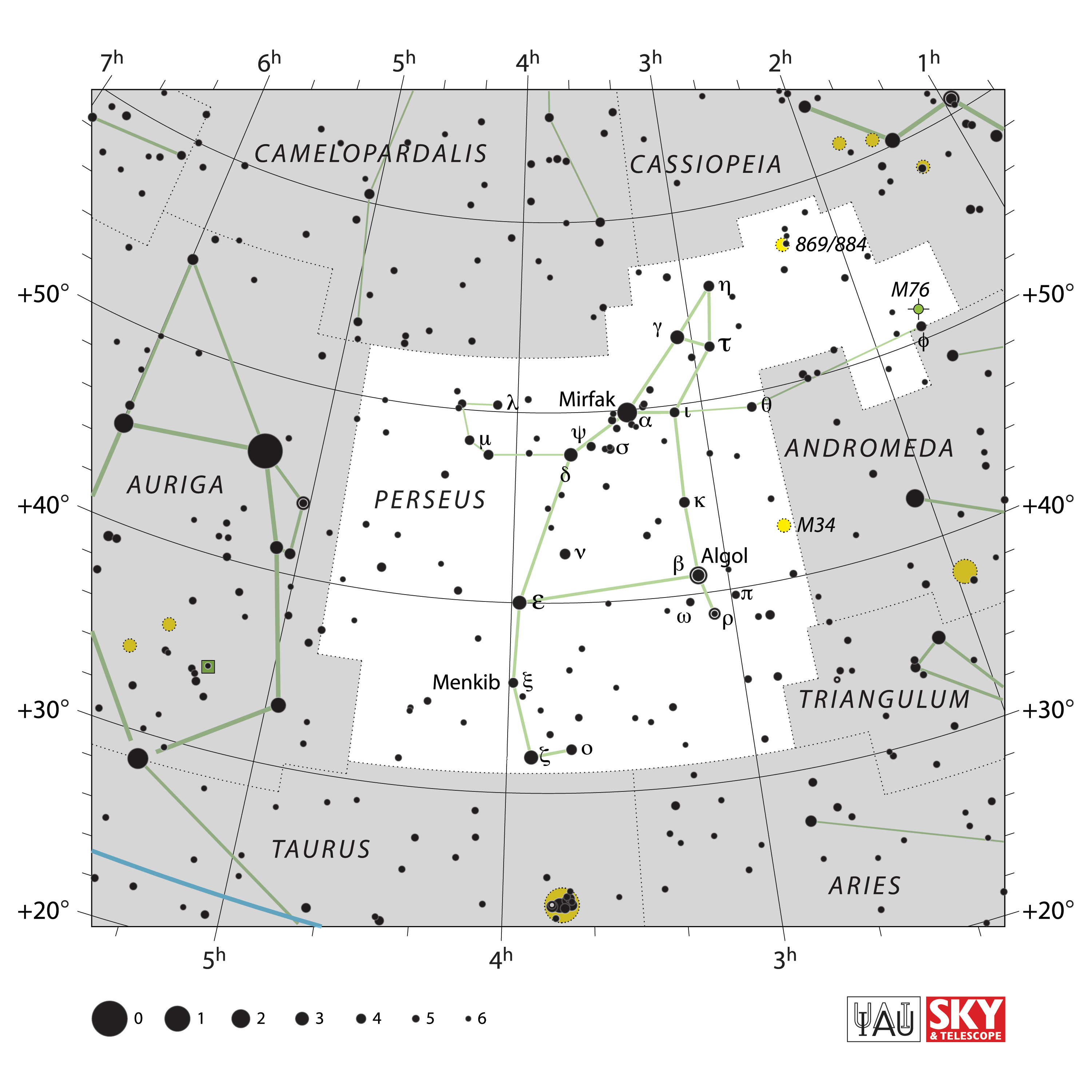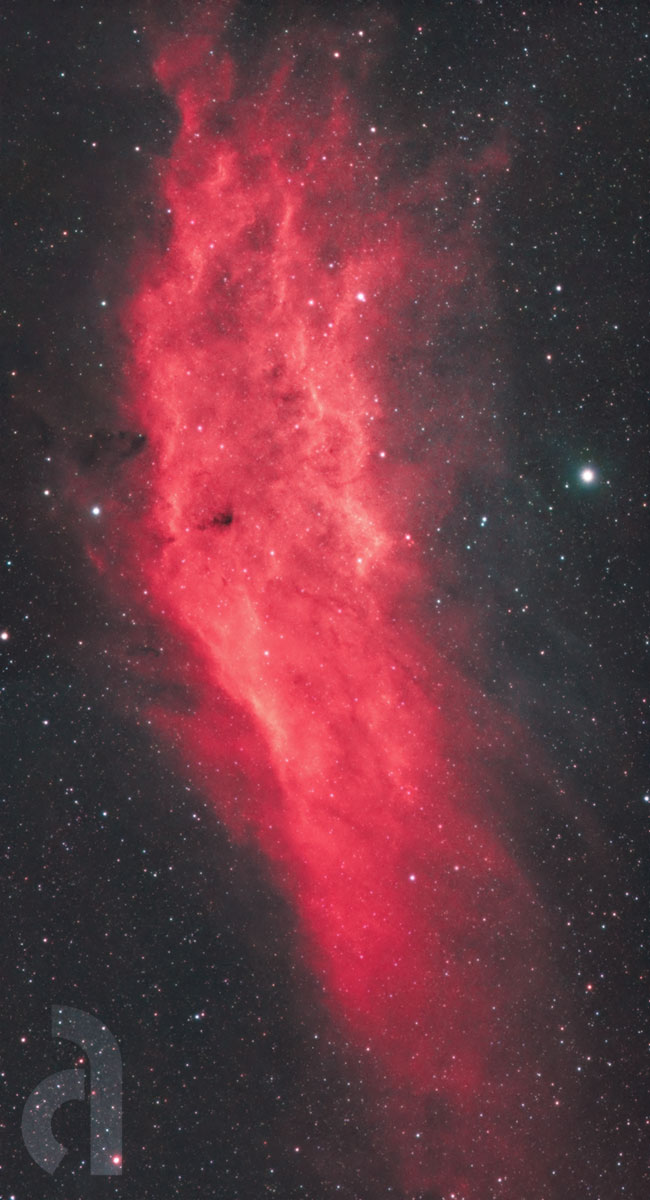The California Nebula
The California Nebula (NGC1499) is a bright red hydrogen emission nebula located in the Perseus constellation. Its name comes from its resemblance to the California state. With an apparent magnitude of 5, it is a popular target for amateur astrophotographers using a camera and telescope. Similar nebulae include the North America Nebula, Heart Nebula, and the Rosette Nebula.
Specifications:
Designation: NGC1499
Known As: The California Nebula
Apparent Size: 2.7° x 40′
Magnitude (lower is brighter): 5.0
Distance from Earth: 1,300 LY
Capitalizing on all the Hydrogen
The image above was taken in a Bortle 7 sky using the ZWO Duo-Band Filter. This target doesn’t have too much OIII, being mostly built up of red ionized hydrogen gas clouds.
EQUIPMENT
Telescope: Apertura 60EDR
Mount: Skywatcher EQ6R-Pro
Camera: ZWO ASI533MC Pro
Guiding: ZWO ASI120MM Mini
Brain: ZWO ASIair Pro
Filters: ZWO Duo-Band Filter
ACQUISITION
Integration Time: 4.67 hours
RGB: 56x 300sec
BIN: 1×1
Gain: 110
Temperature: -10° C
Bortle Scale: 7
CALIBRATION
Darks: 10
Flats: 20
Offset/Bias: 20
The Perseus Constellation
Perseus (Greek Hero) is located in the north, and has the Milky Way pass through. The brightest star is the yellow-white star called Mirfak. It also hosts the annual Perseids meteor shower, which is one of the most active meteor showers in the sky. The Perseus constellation is bordered by Aries, Taurus, Auriga, Camelopardalis, Cassiopeia, Andromeda and Triangulum.
The California Nebula is located in the foot of Perseus, just above the star, Menkib. Other deep sky objects located in the Perseus constellation include: Little Dumbbell Nebula and M34.

Available Merchandise
Use the Order Form to request prints or merchandise. (I accept Venmo or CashApp.)
*General information regarding constellations, galaxies, nebulae, and planets have been sourced from: AstroBackyard, VisibleDark, Wikipedia, EarthSky, and NASA.

